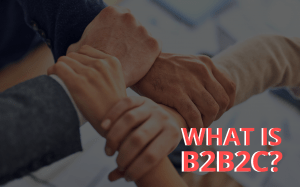The word leader came into existence in 1837. It originated from an Old English word ‘lædan’ that means to lead as a guide. A leader leads because of their Leadership qualities.
It’s an innate skill of every leader. Thus measurement of leadership skills is essential to gauge its efficiency from an organizational perspective.
For Industrial success and to move ahead in the competitive business world- there is a clear-cut need for Leadership qualities in an organization’s internal networks.
Leadership Measurement is a comprehensive procedure to identify and assess an individual’s capabilities as they involve in influencing, leading, and directing its subordinates.
Hence, it gives organizations to comprehend the kind of leadership skills present in their workforce and board members.
This article will let you know the various facets of measuring leadership. It includes:
- Measuring Leadership Competencies & Skills.
- Measuring Leadership Performance.
- Metrics to measure leadership impact & effectiveness.
- Measuring effectiveness of Leadership Development program.
- How to measure the Leadership Index?
- And Questionnaire for Leadership management
Measuring Leadership Competencies & Skills
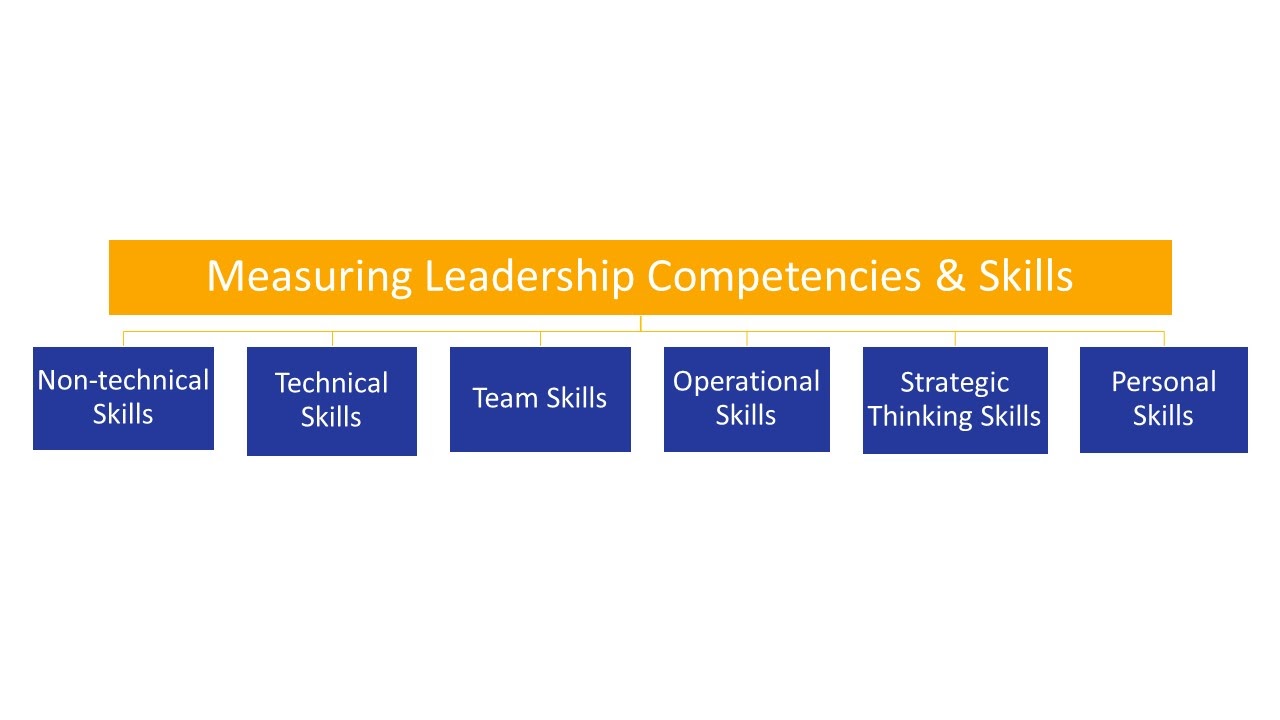
Leadership competencies and skills oil the wheels of organizational progress and success. The fast pace of business trends demands the development of new leadership competencies and skills.
While some leadership competencies and skills are essential in most firms. Every leader should have their own set of leadership attributes depending on organizational objectives and work culture.
Measuring Leadership competencies & Skills comprehends establishing the core skills required by an organization to reach higher performance levels & achieve its strategic goals
Moreover, leadership quality needs to be assessed at a broadened range of skills. The following skills are the combined form of all the required skills that an organization should review while measuring leadership.
Technical Skills
It implies the ability and knowledge of individuals in a specific domain. Thus directing how well they can perform their practical tasks or duties.
The technical skills will differ for every field- technical skills for business consultants will differ from wedding consultants or, a finance manager will be measured based on its financial knowledge, awareness, and how well she/he is in keeping up with finance trends.
On the other hand for an investment manager it will be how comprehensively she/he understands the client’s investment goals.
Non-Technical Skills
Here the focus is on the People Skills of a leader. People skills refer to the behavioral interaction of a leader with their network.
So, it’s a broad term for three more related abilities i.e- personal effectiveness, interaction skills, and intercession skills.
This is an area of how well leaders behave and function with various personality types in an organization.
As a result, a leader’s ability to effectively communicate and empathize with its subordinate and having a respectful relationship will make them stand in good positions.
Team Skills
Teamwork skills are the ability to coherently work with others during meetings, conferences, collaborations, etc.
To be a successful leader, an individual should be good at communication, and in delegating authorities and responsibilities.
A leader should be aware of team dynamics while possessing great creative skills to approach problems and handling conflicts.
A good leader is a good listener and observer who understands the team’s behavior accurately. Thus easing out its way to influence and motivate employees to achieve the task goals and acts as a role model for them.
Hence, leadership believes in all-inclusive growth- thus guiding and training teammates towards the right direction & provides boosts their confidence through recognition and support.
Operational Skills
Operational skills refer to the planning, organizing, and analytical ability of leaders. A leader has the quick responsive quality to understand employees’, customers’ requirements promptly.
In other words, it involves the competency of a leader in presenting quality-oriented results at a prescribed time by driving a good amount of revenue and profits.
Strategic Thinking Skills
Strategic thinking skill differentiates leaders from other individuals of the organization. It is the long-term vision of a leader- simply means where they want to be and how they achieve it.
Leaders define vision not on loose air instead they frame the vision based on the numbers and analyzing the market. Thus, using it to make strategic decisions for the achievement of goals.
Personal Skills
Persona Skill is rooted in a leader’s core personality, which includes its qualities, behaviors, emotional traits, etc. A leader has the innate quality of taking great responsibilities and steers exceptional performance results.
A powerful leader is accompanied by higher self-confidence & have a positive outlook on every problem.
Thus, these are the broad skills an organization should evaluate while measuring leadership competencies and skills.
Measuring Leadership Performance
Evaluating the performance of leadership is a task full of challenges and significant time investment.
A good measurement of Leadership Performance clearly defines the organization’s regulation, its momentum, and realizes the requirements for future goals.
For an organization, an independent performance evaluator or consultant will be more reliable and effective than an internal evaluator. This will ensure a bias-free and truthful measurement of performance.
The following four core steps are defined by Q2 Solutions which broadly specify the activities to be followed while evaluating the performance of leadership;
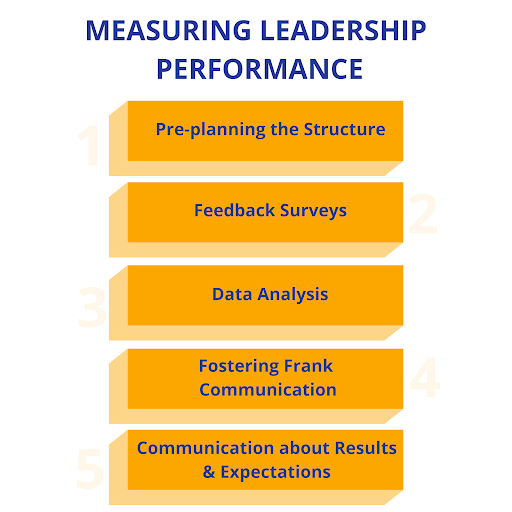
Pre-Planning the Structure
Organizations have to pre-planned the period and the time of leadership evaluation. Thus mapping out the timeline and the process of evaluation structure.
Moreover, this will specify the factors to be considered, the needs to be answered and the problems to be solved.
Feedback Surveys
Feedback surveys are a simple yet extensive method to evaluate leadership. The top leadership evaluation should involve the subordinates, employees, or those who lead for an effective process.
One of the best ways is to conduct a 360-degree feedback survey for maintaining employees’ confidentiality. So, this will ensure a clear, anonymous, and genuine feedback approach for the best results.
Data Analysis
The next task is analyzing the data and transforming it into a model to get informative insights and conclusions.
Additionally, it further involves the interpretation of the results of leadership in the most accurate & precise way in the form of graphs, charts, or tables.
Fostering Frank Communication
To have a great value from this survey, the key activity should be to employ a free organizational atmosphere for expressing ideas and suggestions. Thus, ensuring a concurrent decision-making activity with active participation from all.
Communicating about Results & Expectations
Measuring leadership isn’t limited to mere assessment. The next mandatory activity which is often overlooked is to have a dialogue about the company’s expectations with the individual.
For avoiding the feelings of overwhelm, a consultant should help the individual in understanding the results clearly.
He should communicate the future conduct of action- what will happen, how it will happen when it will happen for boosting professional growth.
Metrics to Measure Leadership Impact
The metrics to measure leadership are difficult to frame. With wide forms of organizational operations and activities comes the task of varied metrics measurement.
The leadership metrics differ from leader to leader, level to level, and from firm to firm. There are no fixed metrics for every leader.
For example, reaching the monthly sales target is important for sales managers and not for operation managers. The following are the common metrics to measure leadership impact:
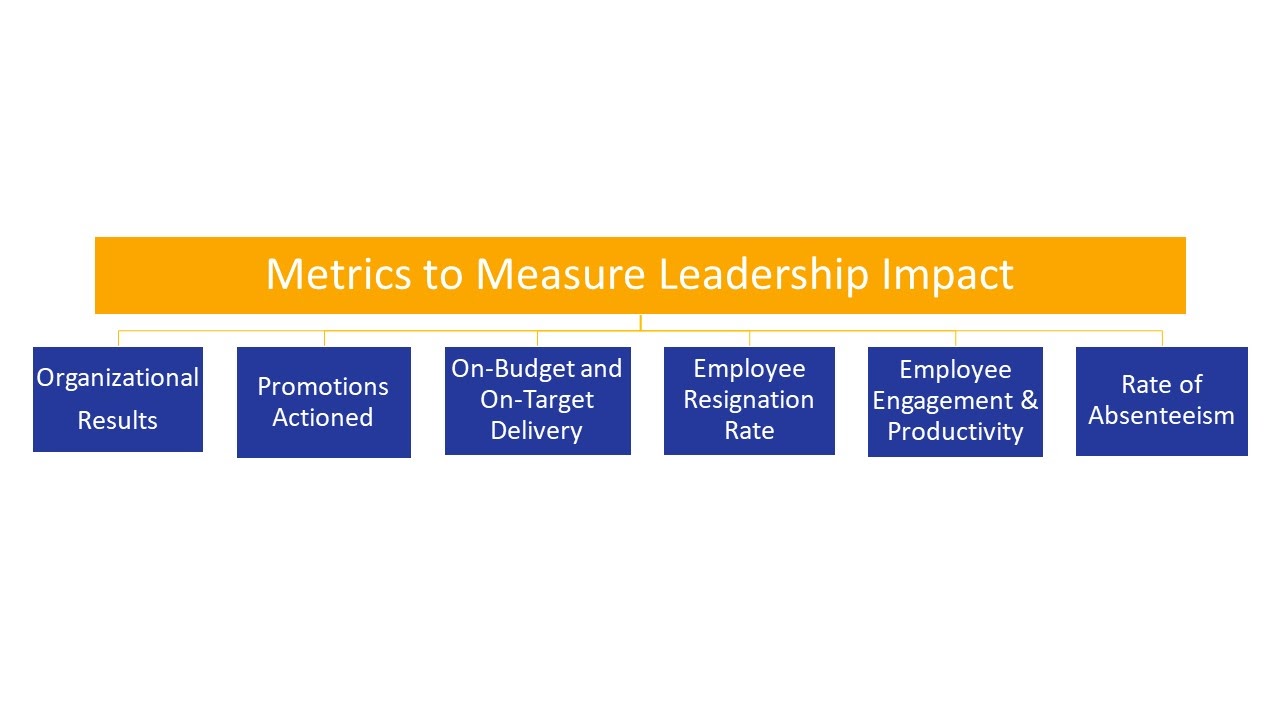
Employee Engagement & Productivity
Leadership is not the only factor that influences employees’ engagement & productivity levels. But still one of the key factors that influence them.
In case the findings say, a lower engagement score then this indicates shortcomings from the leader’s side.
Whereas the high score indicates the positive influence of leaders on their subordinates or team members.
Employee Resignation Rate
As the famous saying goes-” People quit their bosses, not their jobs.”
If the Employee resignation rate rises, then there must be a significant problem that needs redressal.
Monitor each team and evaluate which team has the highest resignation rate. Having conversations with the team leads to understanding the reason for the high rate.
Although presuming team leaders to be the sole cause will be misleading, instead, it should opt for further broad investigation.
On-Budget & On-target Delivery
The crucial role of any leader is to deliver the results within the set budget and at a specified time. However, there shouldn’t be strict budget constraints. The variance of two to three percent is completely acceptable.
However continuous variance for several months in target and budget will require in-detailed analysis to understand the reason for the variance.
For eg: Is the sales target too high? Or is the base pay of new hires more than required? A variance may not always indicate negative implications, instead of a need for a detailed review.
Rate of Absenteeism
The absenteeism rate matters when the figure is abnormal. Everyone gets sick sometimes or needs a break. But every time?
The more than the average figure entails that the employees are disregarding their job or maybe looking to leave the firm.
Is it because of the leader or organization culture or lack of growth opportunities? The officials should monitor the patterns of absenteeism among similar teams to dig the cause for it.
Promotion Actioned
This metric defines the number of people that got promoted in a group. This benefits in understanding if the leader can create promotable employees and grow the talent.
Leaders with low or zero promotions actioned rates can be doubtful. This could be the leader is not letting the employee flourish their talent and causing hindrance in their career.
So, organizations can monitor the reason for leaders not being able to build talented staff.
Organizational Results
Are the leaders able to reach organizational goals? Are they efficient in handling their overall team? Also, are they able to influence them towards the company’s vision?
Are the leaders of the firm efficient and successful in taking the company ahead? So, this all will determine the impact of leadership.
Measuring Effectiveness of Leadership Development Program
The success of the Leadership Development Program leads to positive ROI. However, it can be complicated to evaluate the ROI of the program.
Donald Kirkpatrick has identified the 4 levels to evaluate the effectiveness of leadership development programs.
Level #1 Reaction
The focus here is to gauge the satisfaction of the program. Participants should be offered an assessment to understand the relevance of the program for them.
Therefore, the questions may include- would you recommend to others, was it worth the time, etc.
Level #2 Learning
It is to assess whether learners have gained the required knowledge and skills. Are their skills upgraded? Will they be able to handle new tasks that will require those skills? etc.
Level #3 Behavior
The program proves to be successful when its learnings are integrated with on-job tasks. So, it can be done through surveys from the team members- to review if there is any upgradation in the routine course of action in leaders.
Level #4 Results
To examine if the benefits exceed the costs? Are the leaders able to pick up the required skills and knowledge? Will they be able to manage new responsibilities for future company goals etc.
Measuring Leadership Index
Leadership Index is the trademarked tool by Inwards Advanced Coaching which includes 45 leadership success factors. This includes:
- 6 mental clarity factors,
- 12 emotional bias factors,
- 25 soft skills,
- 2 stress factors
The tool is designed to get clear insights into leadership performance, productivity, etc. One can detect the blind spots along with their strengths.
Therefore, it also helps to determine the conditioning of the leader in the organization and how much stress or emotional barriers a leader is facing in the firm.
Leadership Management Questionnaire
Assessing Leadership needs to consider all the broad indicators that influence the leaders. These indicators can be numerous, hence the questionnaire can also be exhaustive:
Following are the key questions that can be asked to leaders team members while assessing the leadership quality:
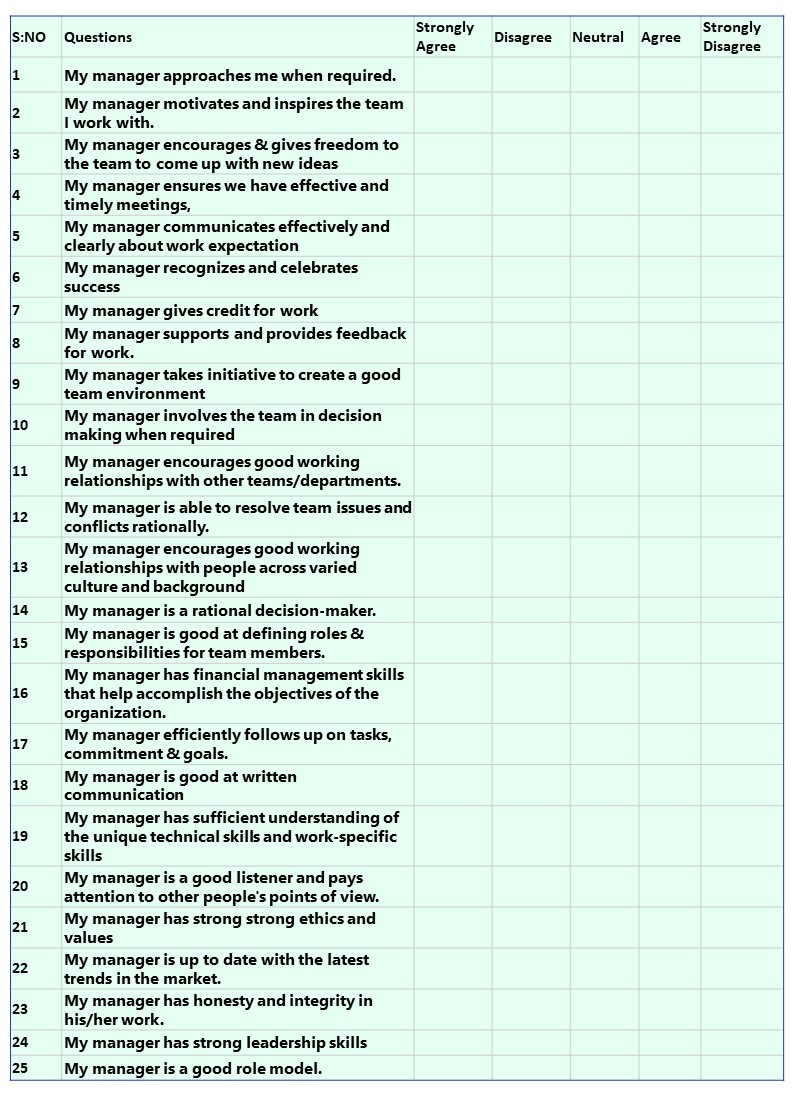
All these questions will be answered based on the five scales- Strongly Agree, Disagree, Neutral, Agree, Strongly Agree.
One must note that- every leader cannot have the same measurement standard. So these questions are highly variable based on different fields of work.
Take away
Successful leadership can bring great accolades to an organization. A leader plays a pivotal role in managing and guiding the people of an organization through various complexities to achieve business goals.
Although measuring the effectiveness of leadership is a complex process but will help to identify where your top management stands. It can help to get deep insights into the strengths and weak points of the team.
Leadership is the blood flow that keeps organizations active. Thus measuring their core qualities and performance will bring better business outcomes.







